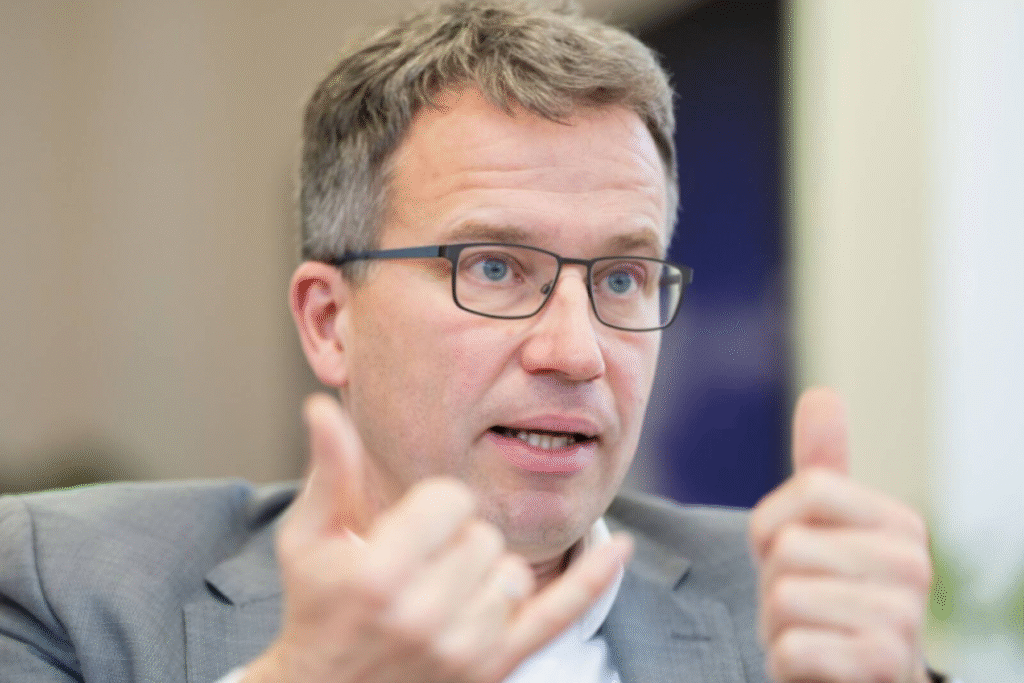
The sharp increase in labor supply forecast by Statistics Austria for Vienna—and the significant decline in the rest of the federal states—is “really bad news,” said AMS head Johannes Kopf. “The demographic problems in the labor market cannot be solved by the Red-White-Red Card alone,” Kopf told APA in an interview. Austria, he said, is not the top destination for international skilled workers.
“We must use the potential of foreigners who are already here but whom we did not actively recruit, such as unaccompanied refugee minors,” the AMS head explained. “With the right support, they too could complete vocational training and become the workers we will need tomorrow.” Provinces like Carinthia, he warned, will suffer particularly from labor shortages in the future.
Skilled Worker Search In A Time Of Recession
Austria has been trying for years to attract more skilled workers from outside the EU. The numbers are increasing but remain low. As of mid-year, more than 12,400 qualified workers from outside the European Economic Area held a Red-White-Red (RWR) Card, which grants limited residence and restricted access to the Austrian labor market. By comparison, Austria has around 4 million employed workers.
For Austria’s labor market and economy, the 2020s have been turbulent—first the COVID-19 pandemic, then record inflation, and finally over two years of economic downturn. Unemployment has been rising since April 2023 and is expected to decline again by 2026, according to current forecasts. “There is currently nothing positive to report from the labor market,” Kopf said earlier this month, commenting on the September labor data. Economic researchers expect some relief in the coming years due to economic growth and demographic change. By 2030, the Austrian Institute of Economic Research (Wifo) projects a decline in the unemployment rate from the current 7.5 percent to 5.9 percent.
Kopf On Refugee Integration: “We Have Achieved A Lot”
Ten years after the major refugee influx, Kopf offered a positive interim assessment. “More than 60,000 people from Syria, Afghanistan, Iraq, and Iran are now employed in Austria. We have achieved an enormous amount,” the AMS director stressed. “But we’re not done, because even after 2016, people from these regions have continued to arrive in Austria.” Around 75 percent of refugees currently live in Vienna. Kopf has repeatedly called for residence requirements to ensure recognized refugees remain for an extended period in the federal state where they first received asylum. This, he said, would prevent excessive migration to Vienna.
Kopf identified declining total working hours as a major issue for Austria’s economy. Between 2008 and today, the number of employees rose from 3.39 to 3.96 million, yet the total number of hours worked has slightly decreased. “The fact that, on average, we are working fewer hours is good for unemployment numbers, but bad for the economy, productivity, and social security,” he said.
High Part-Time Employment In Austria
Kopf sees a major lever for increasing working hours in nationwide full-day childcare options. “Only when we have that will people have real choice. Then we can look at what incentives exist in the system that keep people in part-time work,” he said.
Austria recently recorded the second-highest part-time rate among the 27 EU countries, behind the Netherlands and ahead of Germany. The debate over part-time work has flared up repeatedly in recent years. The ÖVP has criticized the high rate given the skilled labor shortage, pointing to its negative macroeconomic effects and financial losses for social security. The SPÖ, unions, and Greens cite care and family responsibilities as key reasons for part-time work, while the FPÖ and NEOS call for more incentives for full-time employment.
Kopf: Artificial Intelligence Is A “Disruption”
Kopf said he does not expect artificial intelligence (AI) to cause an overall decline in employment in Austria. “There will be areas with problems and others with opportunities, as with every disruptive innovation since the steam engine,” he said. The AMS plans to increasingly use AI in its daily operations and is working with other European employment agencies on AI projects. “We have many ideas for how we can use AI—far more than we can currently implement,” said Kopf.
At present, the AMS uses AI for tagging job postings by skill sets rather than just job titles, a process known as “competence matching.” According to the AMS, more than 45 percent of positions are now filled through this system.
No Successor Planned For AMS Algorithm
In early September, the AMS won its long-standing legal dispute with the Data Protection Authority over the use of its algorithm-based “Labor Market Opportunities Assistance System” (AMAS). “We certainly won’t do it that way again,” Kopf commented. There are currently “no plans” for a successor project. “Implementation would take at least two years.”
New Training Leave Model To Start In May 2026
Regarding the new training leave scheme, the AMS is still waiting for the final law and implementation details. According to AMS plans, the successor model to the education leave program is scheduled to begin in early May 2026. “It will be more complex administratively. Once the law and guidelines are passed, AMS will need about six months to prepare,” Kopf said. “I’m satisfied with the reform. If savings must be made, they’ve been made wisely.” Kopf nevertheless called for more funding for continuing education. In the past, education leave cost around €600 million per year. The current ÖVP/SPÖ/NEOS government has budgeted €150 million annually for the stricter new model. Kopf expects about 5,000 people per year to use the new training leave.
FPÖ Criticizes Kopf’s Statements
The FPÖ criticized Kopf’s remarks. “Kopf wants to legalize illegal immigration through the labor market,” the party said in a Sunday statement. FPÖ social affairs spokeswoman Dagmar Belakowitsch called his comments “the height of government obedience” and accused him of “betraying Austrian workers.” She also condemned his call for nationwide full-day childcare as an attempt to destroy “the traditional family as the foundation of our society.”

